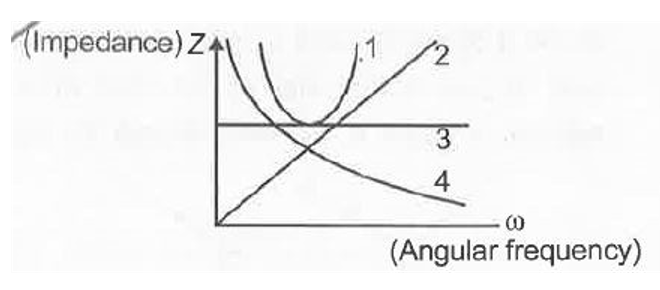Bohr magnetonis given by (symbols have their usual meanings)
4πmeeh2
4πmeeh
eh24πme
eh4πme
The correct Answer is:D
To derive the expression for the Bohr magneton, we start from the fundamental definitions and relationships in physics. The Bohr magneton (μB) is a physical constant that describes the magnetic moment of an electron due to its orbital or spin angular momentum. Here’s a step-by-step solution:
Step 1: Understand the Definition
The Bohr magneton is defined as:
μB=e⋅h4πm
where:
- e is the charge of the electron (1.6×10−19 coulombs),
- h is Planck's constant (6.626×10−34 Js),
- m is the mass of the electron (9.11×10−31 kg).
Step 2: Substitute the Values
Now, we will substitute the known values into the equation:
μB=(1.6×10−19)⋅(6.626×10−34)4π(9.11×10−31)
Step 3: Calculate the Denominator
First, calculate the denominator:
4πm=4π(9.11×10−31)≈1.143×10−30 kg
Step 4: Calculate the Numerator
Next, calculate the numerator:
e⋅h=(1.6×10−19)⋅(6.626×10−34)≈1.059×10−52 J s
Step 5: Divide the Numerator by the Denominator
Now, divide the numerator by the denominator:
μB=1.059×10−521.143×10−30≈9.27×10−24 J/T
Step 6: Final Result
Thus, the value of the Bohr magneton is:
μB≈9.27×10−24 J/T
Conclusion
The Bohr magneton is a fundamental physical constant that quantifies the magnetic moment of an electron due to its angular momentum.
The Bohr magneton is defined as:
μB=e⋅h4πm
where:
- e is the charge of the electron (1.6×10−19 coulombs),
- h is Planck's constant (6.626×10−34 Js),
- m is the mass of the electron (9.11×10−31 kg).
Now, we will substitute the known values into the equation:
μB=(1.6×10−19)⋅(6.626×10−34)4π(9.11×10−31)
First, calculate the denominator:
4πm=4π(9.11×10−31)≈1.143×10−30 kg
Next, calculate the numerator:
e⋅h=(1.6×10−19)⋅(6.626×10−34)≈1.059×10−52 J s
Now, divide the numerator by the denominator:
μB=1.059×10−521.143×10−30≈9.27×10−24 J/T
Thus, the value of the Bohr magneton is:
μB≈9.27×10−24 J/T
The Bohr magneton is a fundamental physical constant that quantifies the magnetic moment of an electron due to its angular momentum.
Topper's Solved these Questions
- BOOK - AAKASH INSTITUTE ENGLISHCHAPTER - MAGNETISM AND MATTER EXERCISE - ASSIGNMENT (SECTION C)34videos
MAGNETISM AND MATTER
- BOOK - AAKASH INSTITUTE ENGLISHCHAPTER - MAGNETISM AND MATTER EXERCISE - ASSIGNMENT (SECTION D)26videos
MAGNETISM AND MATTER
- BOOK - AAKASH INSTITUTE ENGLISHCHAPTER - MAGNETISM AND MATTER EXERCISE - ASSIGNMENT (SECTION A)36videos
MAGNETISM AND MATTER
- BOOK - AAKASH INSTITUTE ENGLISHCHAPTER - LAWS OF MOTIONEXERCISE - Assignment (SECTION-D) (Assertion-Reason Type Questions)15videos
LAWS OF MOTION
- BOOK - AAKASH INSTITUTE ENGLISHCHAPTER - MECHANICAL PROPERTIES OF FLUIDSEXERCISE - SECTION - J9videos
MECHANICAL PROPERTIES OF FLUIDS
Similar Questions
The average intensity of electromagnetic wave is (where symbols have their usual meanings)
View SolutionThe total force acting on the mass at any time t, for damped oscillator is given as (where symbols have their usual meanings)
View SolutionThe average power delivered to a series AC circuit is given by (symbols have their usual meaning):
View SolutionThe average power delivered to a series AC circuit is given by (symbols have their usual meaning):
View SolutionAccording to Newton's 2nd law of motion correct equation is (where symbols have their usual meanings)
View SolutionChoose the correct combination for the given graph.
(Symbols have their usual meaning)
 View Solution
View SolutionWhich of the following is true regarding dimagnetic substances (symbols have their usual meaning)
View SolutionThe poynting vector in vaccum is represented by (where symbols have their usual meanings)
View SolutionThe energy (E) and momentum (p) of photon are respectively, (symbols have their usual meaning)
View SolutionIn an interference experiment, the spacing between successive maxima or minima is
(Where the symbols have their usual meanings)View Solution

